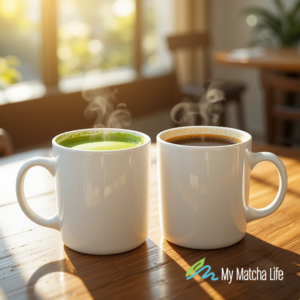 Matcha tea or coffee: Which is your beverage of choice? Many people want to stop drinking coffee because of its high caffeine, so we created a fun matcha vs coffee chart. Simply check out the chart below — or read the full post for more in-depth information on why you may want to switch what’s in your cup.
Matcha tea or coffee: Which is your beverage of choice? Many people want to stop drinking coffee because of its high caffeine, so we created a fun matcha vs coffee chart. Simply check out the chart below — or read the full post for more in-depth information on why you may want to switch what’s in your cup.
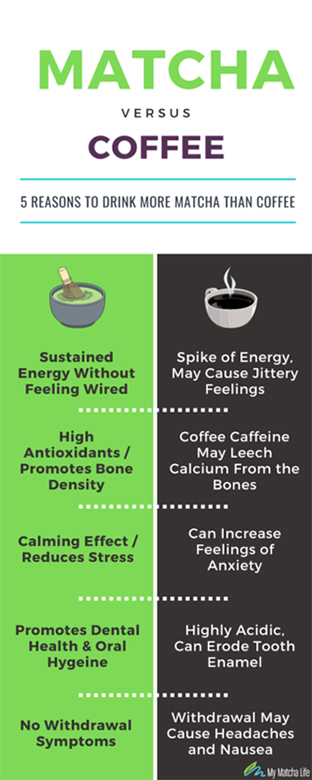
What is Matcha?
Matcha is a powdered green tea that dates as far back as the Tang Dynasty (600-900 AD). It comes from the Camellia sinensis bush, which also produces white, green, and black tea.
What sets matcha tea apart from other tea is how the leaves are grown, harvested, and processed. The tea leaves are shade-grown two to four weeks before harvest, which increases the natural production of chlorophyll. This is what gives matcha its distinct bright green color. After the tea leaves are harvested, they’re lightly steamed, air-dried, deveined, and ground into an ultra-fine powder.
Matcha can be divided into three main grade categories: ceremonial matcha, premium matcha, and culinary matcha. The different grades of matcha are determined by several different factors, including color, taste, texture, density, oxidation, leaf quality, cultivation, and processing.
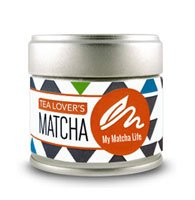 |
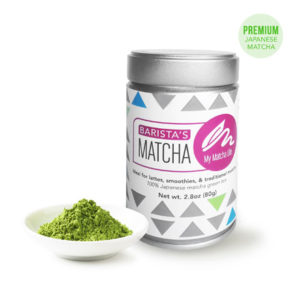 |
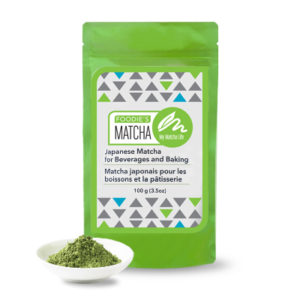 |
What is Coffee?
Coffee is made from roasted seeds or “beans” from the Coffea species. Coffee drinking dates as far back as the 15th century. South America produces the majority of the world’s coffee beans, but the plant also grows in Africa and Asia’s subtropical regions.
Once the beans are harvested, the flesh is removed, leaving only a green seed. The beans are then roasted with dry heat. How long the beans are roasted depends on the type of roast, which can range from light to medium, or dark. The roast determines its flavor, aroma, and color of it when brewed.
Similar to how matcha has different grades, coffee has two main categories: Arabica and Robusta.
Arabica coffee has a delicate flavor and is superior to Robusta coffee. It is also more expensive due to the high demand and amount of labor it takes to produce.
Robusta coffee is used primarily in instant coffee, and espresso, and as a filler in some ground coffee blends. It has a higher caffeine content, which gives it a harsher and bitter flavor.
Matcha’s Health Benefits are Hard to Beat
Coffee and matcha are often touted for their numerous health benefits. However, while both beverages contain high levels of antioxidants, coffee has far less than its green tea counterpart. These antioxidants have been shown to neutralize the free radicals that can cause disease.
Matcha is particularly rich in a class of antioxidants known as catechins, including epigallocatechin gallate (EGCG). Studies show EGCG increases bone density, boosts immunity, and promotes weight management.
View our blog, 6 Health Benefits from Drinking Matcha Tea to learn more!
Caffeine Comparison
One of the most popular questions about coffee and matcha is about the caffeine content. Coffee and matcha tea are both caffeinated drinks, but how much difference can there be? More than you may think! Before we dive in, let’s talk about what caffeine actually is.
What is Caffeine?
Caffeine is the most widely consumed stimulant in the world. It’s found naturally in many plants, including coffee beans and green tea leaves. You can also find synthetic caffeine in beverages like soda and energy drinks.
Caffeine in Coffee vs Matcha
Coffee has significantly more caffeine than matcha. On average, one cup (8oz) contains 95mg of caffeine. This number may vary depending on the type of coffee. For example, a 12oz cup of cold brew can contain anywhere from 150-240mg of caffeine.
Caffeine in My Matcha Life® Matcha
| Tea Lover’s Matcha | 34mg of caffeine |
| Barista’s Matcha | 29mg of caffeine |
| Foodie’s Matcha | 24mg of caffeine |
As you can see from the chart above, My Matcha Life® matcha has different caffeine content depending on the grade. However, each grade contains significantly less caffeine than a standard cup of coffee.
Differences in Energy Boost
One of the reasons people drink caffeine is for an energy boost. Coffee and matcha both have caffeine but they affect the body in different ways.
The caffeine in coffee enters the bloodstream quickly—it takes only 15 minutes for 99% of the caffeine to be absorbed into the body. Many coffee drinkers experience an energy spike followed by a crash, leaving them reaching for another cup.
The caffeine in matcha, however, is absorbed slowly into the bloodstream as it binds to matcha’s denser catechins. When the catechins break down, caffeine enters the bloodstream over a long period of time, resulting in a sustained energy boost. The slow release of caffeine prevents a caffeine crash and drop in blood sugar.
The Negative Side Effects of Coffee
Brewing a fresh pot in the morning may smell amazing and taste delicious once it hits your lips. But after it’s consumed, it can cause some less-than-desirable side effects, such as the following:
Increases Anxiety
Coffee can make us feel ramped up and raring to go, which isn’t necessarily a bad thing when you need to be! But too much coffee can make us feel wired, jittery, and even anxious. It can also cause an increase in blood pressure.
On the other hand, matcha’s L-theanine amino acid calms us mentally and emotionally. It crosses the blood-brain barrier within a few minutes, increasing alpha waves and dopamine levels. This makes us feel more calm and alert. (FYI L-theanine also curbs hunger pangs so we don’t reach for unhealthy treats!)
Poor Dental Health
Here’s something about coffee that may not make you smile—literally! Coffee can negatively impact your dental health in these ways:
- Stains your teeth. It contains tannins, a type of polyphenol that breaks down in the water. These plant-based compounds make it easier for the color compounds found in coffee to stick to your teeth.
- Damages enamel. Tannins also get some help from the acidity. Drinking coffee or any acidic beverage regularly can break down your enamel, making it easier for coffee stains to penetrate through to your teeth. If stains reach your enamel, they will set and be more difficult to remove with brushing.
- Causes bacterial growth. It can also cause bacteria to grow in your mouth, leading to more erosion of the enamel. What’s worse is adding creamer and sugar to coffee, as this can speed up the growth of bacteria and tooth decay.
- Causes coffee breath. Its acidity levels lower the pH of your mouth and promote the growth of odor-causing bacteria. Bacteria love to feed on sugar, so again, adding sweeteners or milk is a recipe for even more bad breath. The caffeine content in coffee also plays a role by reducing the production of saliva and causing dry mouth. Saliva is particularly useful because it gets rid of odor-causing bacteria.
Curious how matcha may impact your dental health? Let’s just say your dentist would approve! Matcha tea’s high antioxidant content fights the bacteria that causes plaque buildup, tooth decay, and bad breath. Plus, matcha is alkaline thanks to its high chlorophyll content, meaning it’s significantly less acidic than coffee.
Withdrawals
For many people, coffee can develop into an addictive and unhealthy habit, also known as dependency. Dependency can cause withdrawal symptoms in as little as 12 hours without consuming caffeine. Common side effects of coffee withdrawals include headaches, migraines, nausea, brain fog, and irritability.
Matcha has zero withdrawal symptoms. Because matcha contains caffeine it can be a transitional aid to quit or reduce coffee consumption.
Order from My Matcha Life® Today!
We hope you enjoyed learning everything you need to know about this debate. If you’d like to switch your morning cup to a mug of matcha tea, order from My Matcha Life® today! We offer a wide variety of premium matcha tea products that you’ll love including in your daily routine.
Not sure which matcha is right for you? Check out this short video briefly explaining the unique characteristics of each matcha product.